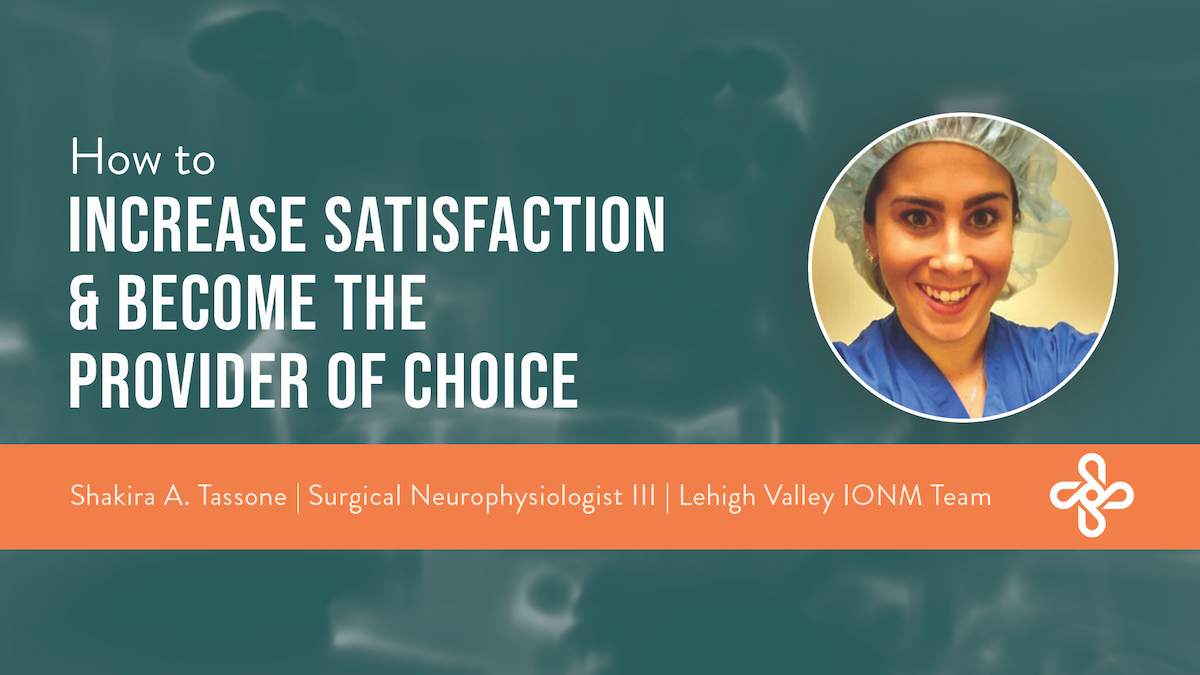
The surgical neurophysiologist functions as the patient’s advocate at every level. This role requires a high level of awareness, adaptability, and mental grit in order to minimize the risk of postoperative neurological deficits. The surgical neurophysiologist is an integral part of the surgical team. They are in constant communication with anesthesia staff, surgeons, and nurses in order to optimize patient safety. Their responsibilities also extend beyond the operating room to include preoperative and postoperative assessments to ensure the patient has emerged safely and without deficit.
The neurophysiologist utilizes multimodality testing of the nervous system to rapidly detect neurological changes and to facilitate the surgeon’s decision-making process. This mechanism reduces the risk of post-operative complications such as paralysis, paresis, brain damage, hearing loss, ischemic events, stroke, etc. Your role as a neurophysiologist is to be hypervigilant in order to protect the patient from neurological damage and alert the surgeon promptly if a concern arises.
IONM Evolution
The extreme need for neurophysiologists emerged rapidly after the development of the evoked potential equipment in the late 1970s. The first modality utilized was the somatosensory evoked potentials and they were found to reduce the risk of paralysis in scoliosis surgeries. Then EEG monitoring was proven to be effective at preventing ischemic events/ stroke during carotid endarterectomies. Therefore without neurophysiologists, surgery would not only be more difficult for the surgeon, but the chances of long-term postoperative injury would be higher. The immediate feedback the neurophysiologist provides allows the surgeon to reduce this risk and ensure patient safety.
The use of intraoperative neuromonitoring has become widespread and imperative to a variety of surgeries. As neurophysiology continues to advance, newer applications are being developed to further improve patient care such as brainstem mapping, spinal cord mapping, monitoring for position-related nerve injuries, and many others. These new advancements allow the neurophysiologist to better detect and prevent adverse outcomes and to provide the highest level of patient care possible. Every day you make a difference by removing risk from surgery and replacing it with reassurance for the surgeon and more importantly the patient.
About the Author
 Shakira A. Tassone, B.S, CNIM, R.EEG T, CHCA, is a Surgical Neurophysiologist III working on our Northeast District- Lehigh Valley IONM Team. Shakira will be contributing a monthly blog, casting a spotlight on the role of a surgical neurophysiologist and how this service is making surgery safer.
Shakira A. Tassone, B.S, CNIM, R.EEG T, CHCA, is a Surgical Neurophysiologist III working on our Northeast District- Lehigh Valley IONM Team. Shakira will be contributing a monthly blog, casting a spotlight on the role of a surgical neurophysiologist and how this service is making surgery safer.



Comments are closed.